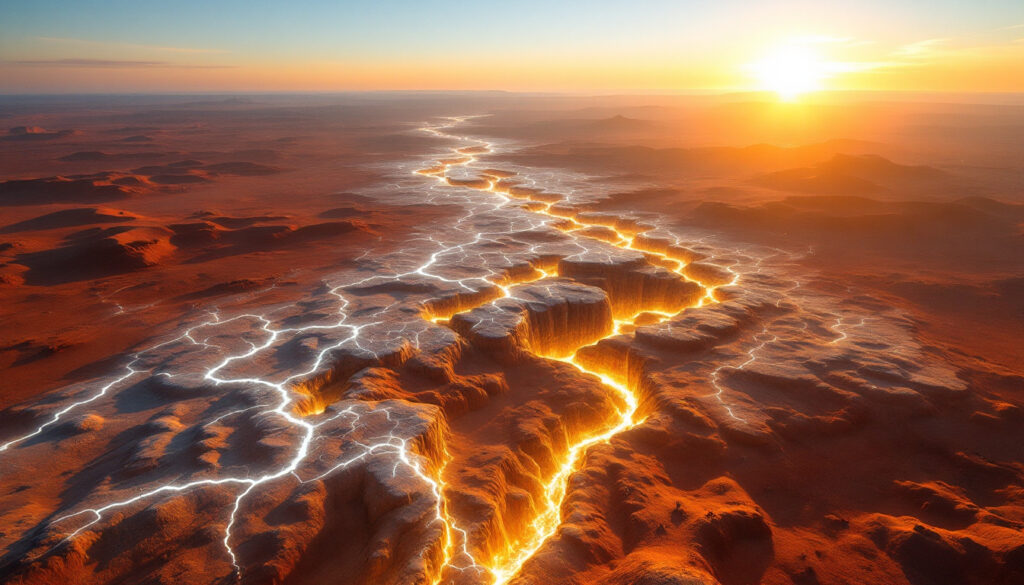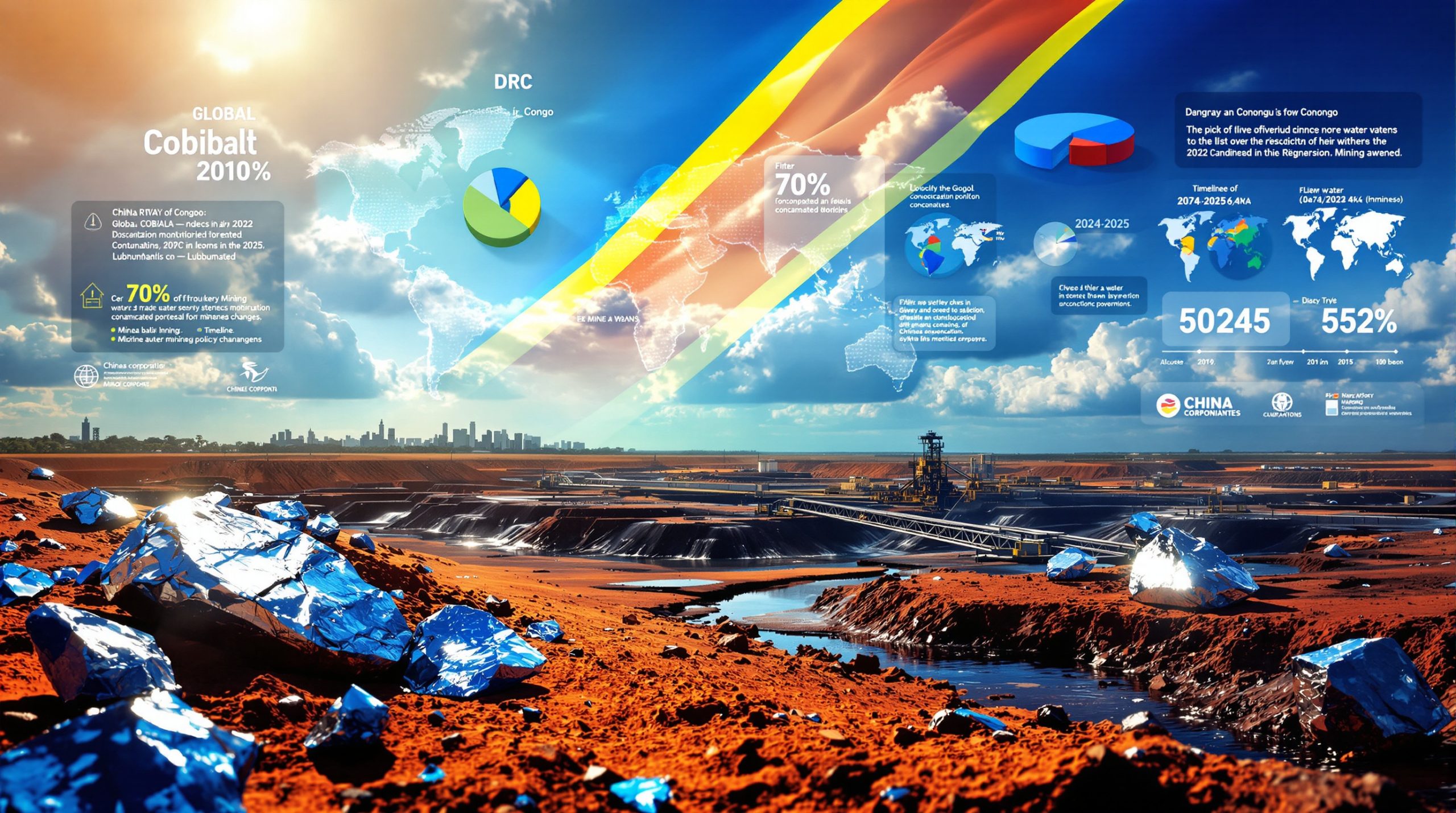What Are Hyper Giant Gold Fields?
Definition and Classification
Hyper giant gold fields are distinguished by their sheer scale, containing 100–200 million ounces of gold, far surpassing smaller classifications such as "giant" (13.2 million ounces) or "super giant" (132 million ounces) deposits. These systems often result from multiple mineralization events interconnected within a single geological framework, creating a unified, camp-scale system. For example, Uzbekistan's Muruntau deposit, estimated to hold over 200 million ounces, exemplifies the hyper giant category due to its extensive, genetically related mineralized zones. Understanding the geology of ore deposits is crucial for identifying these massive systems.
Famous Examples of Hyper Giants
Notable hyper giants include Olympic Dam (Australia), a polymetallic deposit hosting significant gold reserves, and Muruntau (Uzbekistan), one of the largest gold mines in the world. These deposits contrast with distributed systems like Western Australia's Yilgarn Craton, which comprises multiple discrete deposits rather than a single interconnected system.
Distinguishing Characteristics
Hyper giants are defined by their singular genetic origin and spatial continuity across vast areas. For instance, Plutonic's Northern Simpson Desert project in Australia spans 6,500 square kilometers, with mineralization linked to large-scale fluid migration pathways. This contrasts with fragmented systems like the Macquarie Arc, where gold deposits are dispersed across unrelated geological structures.
Why Hunt for Hyper Giants?
The Risk-Reward Proposition
Exploration for hyper giants prioritizes high-reward targets despite inherent risks. As Chris Butera, Managing Director of Plutonic, notes, "Small deposits are just as hard to find but nowhere near as rewarding". This philosophy drives companies to focus on remote, underexplored regions where district-scale discoveries—such as Olympic Dam—can redefine mining economies. Current gold market analysis further justifies the pursuit of these massive deposits.
Exploration Philosophy
Successful hyper giant exploration requires targeting "places people haven't looked or are unwilling to go". Plutonic's projects in the Simpson Desert and Georgetown, Queensland, exemplify this approach, leveraging algorithm-derived structural detection technology to identify deep fluid pathways.
The Rarity Factor
Hyper giants demand rare geological conditions, including prolonged tectonic activity and sustained fluid flow. Only a handful of such deposits exist globally, making their discovery a career-defining achievement for geologists.
How Are Hyper Giants Discovered?
Advanced Technological Approaches
Modern exploration integrates algorithmic structure detection, hyperspectral imaging, and induced polarization (IP) surveys to map subsurface anomalies. For example, Plutonic's IP surveys in the Simpson Desert identified sulfide-rich targets at depth, guiding diamond drilling campaigns. Geomechanical modeling further predicts vein dilation zones where gold-bearing fluids may concentrate. The industry's digital transformation in mining has revolutionized how these deposits are identified.
Traditional Field Methods
Despite technological advances, field geology remains critical. Plutonic collected 1,300 rock chip samples across its projects, identifying epithermal quartz veins indicative of mineralizing systems. Diamond drilling, though slow (30–35 meters per shift), provides continuous core samples to validate targets. Understanding how to interpret mining drilling results is essential for exploration success.
Targeting Methodology
Explorers prioritize continental-scale structures capable of channeling metallogenic fluids. In Queensland's Gilbert River region, quartz vein networks revealed potential dilation zones, guiding Plutonic's drilling programs.
The Challenges of Hyper Giant Exploration
Geographical Challenges
Remote locales like the Simpson Desert pose logistical hurdles, with temperatures exceeding 40°C for eight consecutive days during winter fieldwork. Seasonal rains further limit access, confining operations to a six-month window.
Time and Resource Constraints
Diamond drilling progresses slowly, with a single 300-meter hole taking 5–6 days to complete. Explorers must balance meticulous data collection with investor expectations, often requiring decades of intellectual investment before commercialization.
Financial Realities
Unlisted companies like Plutonic rely on patient capital to sustain multi-year campaigns. As Hedley Widdup of Lion Selection Group notes, listed entities face pressure to deliver short-term results, whereas private ventures can prioritize long-term discovery.
Greenfields vs. Brownfields Exploration
Industry Investment Patterns
Approximately five times more funding flows into brownfields (near-existing mines) than greenfields (new frontiers). Brownfields exploration minimizes risk by extending known deposits, while greenfields ventures target untapped systems.
The Greenfields Advantage
Greenfields projects offer first-mover advantages in underexplored regions. Plutonic's focus on Australia's deserts—areas dismissed by larger firms—exemplifies this strategy.
Success Metrics
Initial success in greenfields is measured by confirming a mineral system's existence. Plutonic's drilling campaigns aim to intersect sulfide zones, validating their geological models before pursuing high-grade cores.
Case Study: Plutonic's Hyper Giant Hunt
Project Overview
Plutonic's 6,500 km² landholding includes the Northern Simpson Desert and Georgetown projects. Current efforts focus on 1,500 km² of high-potential terrain, combining IP surveys, hyperspectral imaging, and structural modeling.
Exploration Progress
The team identified four drill targets through IP anomalies and surface quartz veining. A 2,000-meter diamond drilling program, conducted over six weeks, aims to intersect sulfide-bearing zones at depth.
Team Approach
A core team of 3–4 geologists expands to 20 during field seasons, conducting extended campaigns in extreme conditions. Their expertise in structural geology and geophysics enables rapid target refinement.
What Makes a Successful Hyper Giant Explorer?
Essential Mindset
Explorers must embrace long-term vision and resilience. Butera's decade-long commitment to his concept underscores the perseverance required. Strategic mining investment insights can help companies maintain their focus on these long-term projects.
Technical Expertise
Integrating diverse data streams—from geochemical samples to geomechanical models—is critical. Plutonic's collaboration with experts like Amanda Buckingham, developer of structural detection algorithms, highlights this interdisciplinary approach.
Funding Structure
Patient investors willing to endure 10–20 year timelines are indispensable. Lion Selection Group's support for Plutonic reflects this philosophy, prioritizing discovery over immediate returns.
FAQs About Hyper Giant Gold Fields
How long does hyper giant discovery take?
Timelines span 10–20 years, requiring sustained intellectual and financial investment.
What are key indicators of hyper giants?
Surface quartz veins, deep fluid pathways, and large-scale alteration systems signal potential.
How are exploration costs funded?
Private companies and specialized funds provide patient capital, avoiding stock market pressures.
Which technologies aid discovery?
Algorithmic structure detection, IP surveys, and 3D modeling revolutionize target generation.
Disclaimer: This article contains speculative content regarding mineral exploration and potential discoveries. Mining exploration involves significant risks, and there is no guarantee that any exploration program will result in the discovery of economically viable deposits. Readers should conduct their own research before making investment decisions based on the information provided.
Interested in Capitalising on the Next Hyper Giant Gold Discovery?
Discover how major mineral discoveries like Muruntau and Olympic Dam generated substantial returns with Discovery Alert's proprietary Discovery IQ model, which delivers real-time notifications of significant mineral findings on the ASX. Explore historic examples of exceptional investment outcomes by visiting Discovery Alert's dedicated discoveries page and position yourself to act on the next potential hyper giant discovery.




